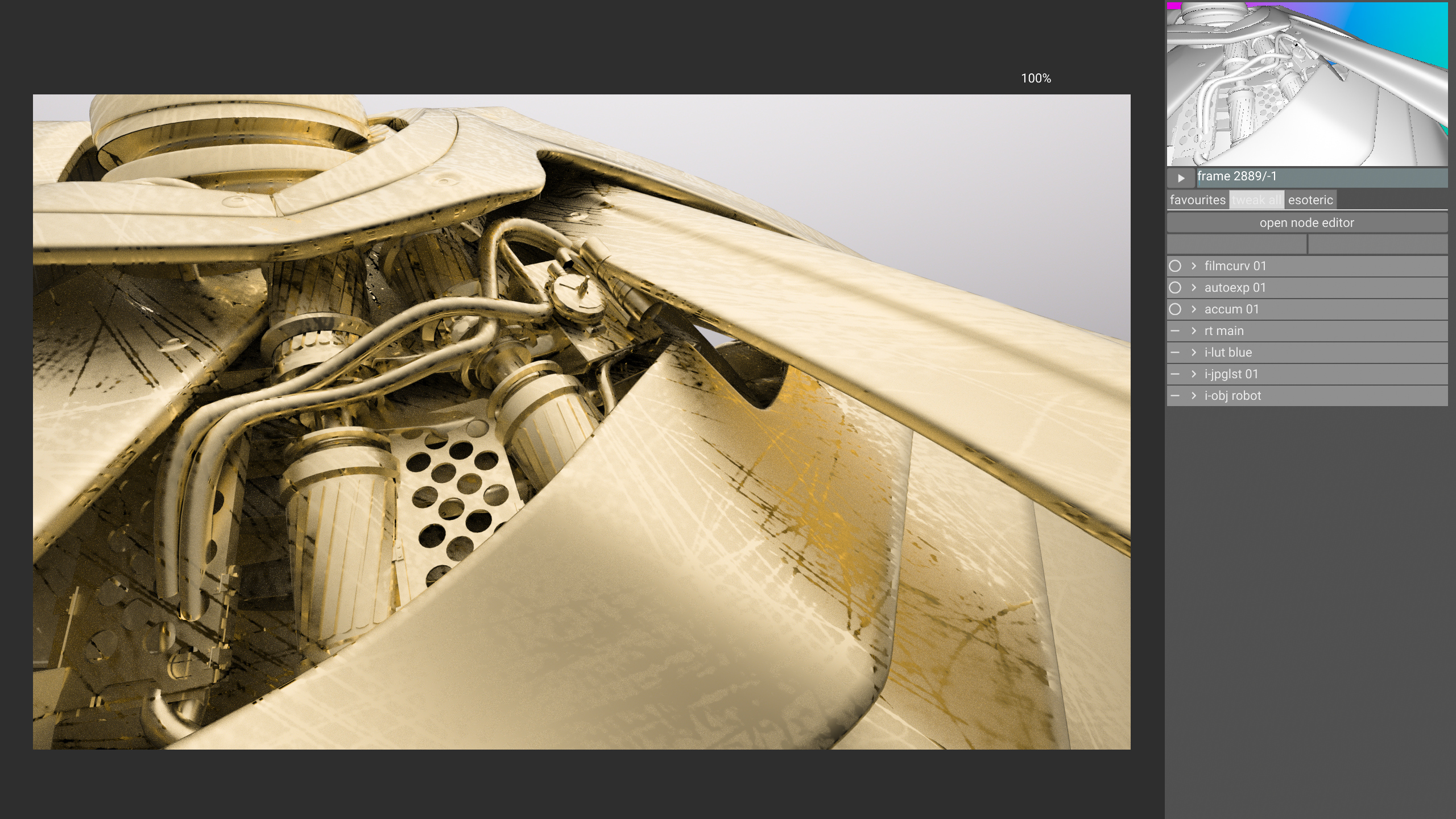rt: simple real-time ray tracing
this uses the vulkan ray tracing extension to path trace a scene. the geometry comes from
one or more bvh modules which collect input for bottom level acceleration structures.
the rt module uses hero wavelength spectral sampling for accurate colour reproduction.
(scene: nikita sky demo)
connectors
outputthe rendered beauty imagetexan array connector for input textures, connect to an i-jpglst or i-lut moduleblueblue noise texture as input lut, as those provided by christophirrirradiance buffer, that is: beauty output divided by albedoalbedofake diffuse albedo for use with svgf, demodulated from the irradiance buffergbufpacked normal and depth of the first intersection
the tex connector expects an array of input textures, as the
i-jpglst module provides, or the
i-lut module if you pass a .txt file with a list of
filenames.
you can download a blue noise texture from this github issue. this was too large to just ship with the vkdt distribution.
parameters
this still changes so often.. be careful to trust this text.
camposition, direction, and up vector of the camerafoghomogeneous global background fogsppsamples per pixelenvmapfilename of the environment map, 2:1 aspect latitude/longitude, .hdr preferably 8kcam modeuse custom camera in this module, or grab camera, simulation time, and fog from another modulecam_modif cam mode is set to another module, this is the other module's namecam_instif cam mode is set to another module, this is the other module's instancesamplerchoose which path space sampler to use for rendering: path tracing/env-nee, markov chain path guidingwdwidth of the render in pixelshtheight of the render in pixels
the sampler dropdown list includes simple path tracing with optional next event estimation to the envmap,
as well as markov chain path guiding based on the publication:
Lucas Alber, Johannes Hanika, and Carsten Dachsbacher.
Real-time Markov chain path guiding for global illumination and single scattering.
Proc. ACM Comput. Graph. Interact. Tech., 8(1), 2025.
